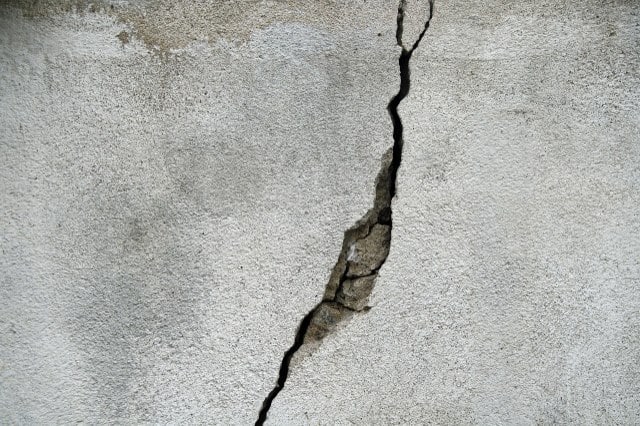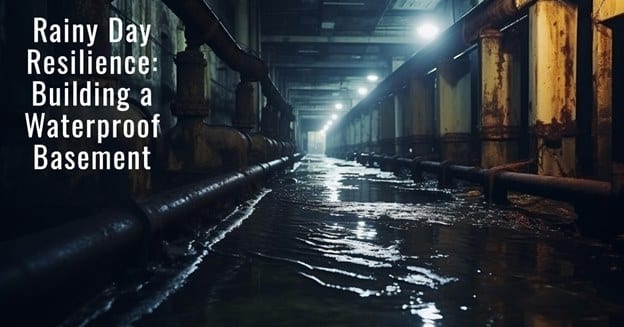The idea of a building is to provide shelter, meaning the structure must be strong and withstand the elements. However, this isn’t the case for several buildings in today’s modern society. When the strong winds blow and the rains pour, many families must relocate to keep themselves safe and dry.
In short, only some buildings are rainy-day resilient, especially in the basement. If you’re looking to keep your basement comfortable, safe, and dry, this blog is for you.
Let’s get it!
Exterior Waterproofing of Basements

The decision to invest in external wall waterproofing for your basement is a smart one, especially when you choose a trusted waterproofing Philadelphia company. To guarantee long-lasting results, you should consider the following approaches:
1. Waterproofing Before Painting

Before you apply any type of paint to the basement wall, consider a vital aspect of basement protection – waterproofing. Many people overlook waterproofing before painting, much to their regret.
The truth is that paint alone can’t provide adequate protection for the external walls of your basement. Secondly, paint lacks the resilience required to endure the harsh elements as the seasons change.
Therefore, exterior waterproofing before painting helps provide the wall with all the protection it needs before an aesthetic outer coat covers its surface.
2. Outer-wall Coating
Another effective and long-lasting method of waterproofing is a waterproof wall coating. Adding a coating to your basement walls helps protect them from water and rain infiltration. The function of this coat is simple. They serve as a protective barrier, preventing moisture from passing through to the other side of your basement wall. This ensures your basement remains dry for years to come.
3. Effective Drainage
One of the principal causes of water damage to buildings is poor drainage. Failure to build the right drainage systems around your house means water has to find its way through your building. Usually, this means the basement and other vulnerable areas become susceptible to water penetration. Fortunately, it doesn’t take much to prevent this damage.
Simply develop proper drainage around your house to direct rainwater and moisture away from your walls. Examples of the things you can use to do this are downspouts and gutters. Apart from installing these two structures, you can also slope the ground surrounding your basement and foundation to ensure water moves away instead of toward them.
Interior Waterproofing of Basements
1. Fix Any Visible Minor Cracks

Cement works well for bigger holes and cracks, while a crack filler may be used for tiny gaps. You may avoid using hydraulic cement entirely by applying crack filler alone if your holes aren’t too big. Having said that, it’s always advisable to have a basement inspected for any holes or cracks, as they may be signs of a more serious issue with your foundation that might later cause more significant and costly issues.
If so, the problem will not be solved by following these instructions on waterproofing basement walls from the inside. You can search for particular indications to determine if your basement needs a complete inspection.
2. Interior Application of Waterproof Coating
Once all crevices and holes have been sealed, treat your basement’s surfaces with a waterproof solution. When deciding which product is ideal, try to choose one with a warranty against water seepage and hydrostatic pressure on floors and walls.
Make sure to massage the concrete sealer into the pores of the walls using a good-quality nylon bristle brush or a 3/4′′ nap roller. At least two coats are required to provide waterproofing and adequate coverage. But don’t forget to read all the instructions and guidelines from the manufacturer thoroughly before applying.
How to Choose an Effective Waterproofing Method for Your Basement
Since the market comprises several waterproofing options, selecting the best one requires caution. Various factors, like the building materials, rainfall in your location, damage extent, etc., will determine the best waterproofing solution and technique suitable for your basement and building. For advice on which approach might work best for your home, it is recommended to speak with a waterproofing specialist.
Vital Factors to Consider for a Successful Basement Waterproofing
Waterproofing may be particularly valuable during the rainy season, and below are some recommendations to guarantee its effectiveness:
Excellent materials – Select waterproofing products of the highest grade that are compatible with the kind of wall in your basement.
Proper surface preparation – Preparation should always come first when you want to waterproof any surface. Therefore, your wall surface must be dry, clean, and debris-free.
Professional installation – For precise and successful waterproofing applications, only work with skilled specialists.
Focus on the details – Sealing any gaps, crevices, and joints will help with waterproofing and prevent water intrusion.
Routine checks – Regularly inspect any damage, make maintenance investments, and take immediate action to resolve any problems as soon as they arise.
Tips for seasonal upkeep on walls resistant to rain

Every season has certain maintenance necessities you should meet to ensure your rain-resistant walls remain intact. However, monsoons typically require the most caution. Here are some tips for keeping your basement dry and in good condition during the rainfall season:
Regularly examine walls and address any problems to maintain wall integrity and stop water penetration, especially ahead of the rainy season.
To avoid overflow and consequent water damage to external walls, keep your drainage systems clean of debris.
Prune any flora close to walls to prevent moisture accumulation and lower the possibility of water seepage.
Be Prepared For The Rainy Days
Waterproofing is one of the best things you can do for your home to ensure it provides shelter to occupants and belongings. When done right, you don’t have to worry about moisture, rain, or any water-related damage affecting your basement. With the tips covered in this blog, you can perform external wall waterproofing solutions, which help structures deal with harsh climates, and internal waterproofing for maximum and effective protection.
Remember, the best time to make your property resilient on rainy days is now! Before the rainy season.


